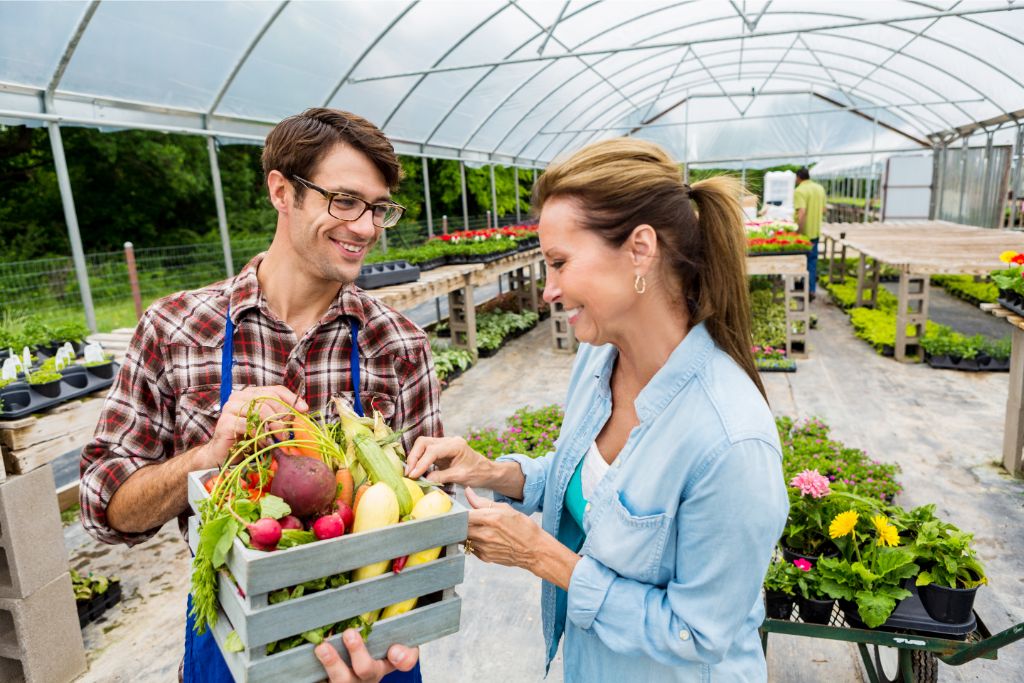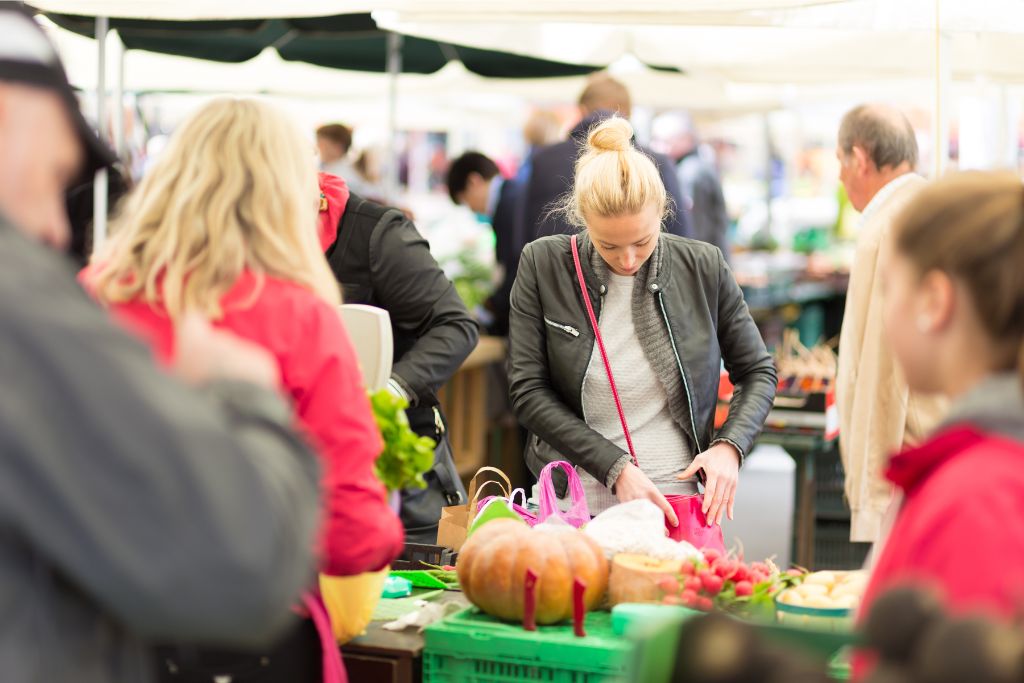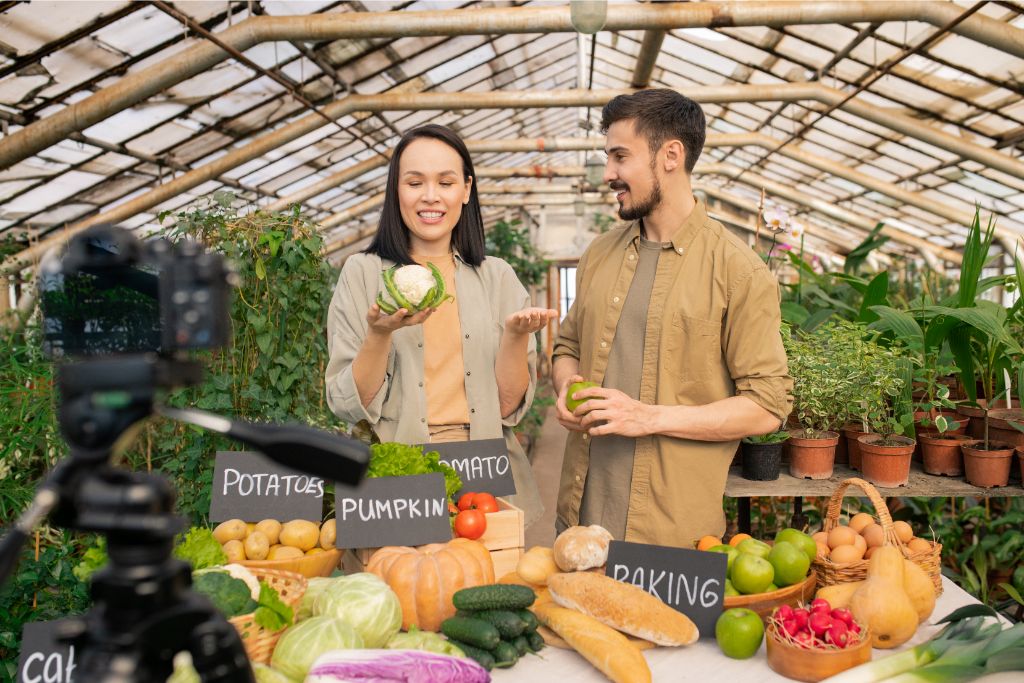Essential Social Media Marketing Tips For Local Farm Markets

Have you got the freshest produce in town? Let’s spread the word!
Delve into our top-notch social media marketing tips. They’re custom-made for your local farm market. First, know your audience. Who are they? What do they want? We’ll help you figure it out.
Next, create captivating content. Spark interest. Keep them hooked.
Don’t ignore hashtags. They’re crucial. They can turn likes into sales.
Ready to rule your digital realm? Let’s get this show on the road!
Table of Contents
- 1 Understanding Your Target Audience
- 2 Choosing the Right Social Media Platforms
- 3 Creating High-Quality Content
- 4 Utilizing Hashtags and Location Tags
- 5 Engaging with Your Audience
- 6 Running Social Media Campaigns and Contests
- 7 Collaborating with Local Influencers and Businesses
- 8 Monitoring and Adapting Your Strategy
- 9 BONUS
- 10 Frequently Asked Questions
- 10.1 What are the legal considerations for social media marketing in the agricultural sector?
- 10.2 How can I integrate my offline marketing efforts with my social media marketing strategy for my local farm market?
- 10.3 How do I handle negative comments or reviews on my social media platforms?
- 10.4 What are some practical ways to measure the return on investment (ROI) on my social media marketing efforts?
- 10.5 How can I protect my local farm market’s brand and reputation on social media?
Understanding Your Target Audience
You’ve got to deeply understand your target audience’s needs and preferences to create a successful social media marketing strategy. Here’s where audience segmentation plays a crucial role.
It allows you to divide your potential customers into smaller, more manageable groups based on age, location, or buying habits.
For instance, if you’re selling organic veggies at your local farm market, it’s important to identify who is most likely interested in organic produce. Are they health-conscious millennials? Busy parents looking for fast but healthy food options? This is where demographic insights come in handy.
Remember, not all social media platforms serve the same demographics. Facebook might effectively reach middle-aged homemakers, while Instagram could connect better with younger audiences. Understanding these differences allows you to customize your content according to platform-specific nuances.
Stay updated with current social media trends, too! Is there a new feature that can help boost visibility? How about changes in algorithms affecting post engagements?
It may sound not easy, but knowing your audience well leads to more personalized interactions and, ultimately, stronger customer relationships. So dig deep into those insights and craft an authentic social media presence that speaks directly to their hearts!
Choosing the Right Social Media Platforms
Selecting the most suitable online platforms is crucial for your business to reach its target audience effectively. You can’t just choose randomly. You’ve got to consider platform features and audience demographics to make an informed decision.
Here’s a simple 3-step process that’ll guide you:
- Identify Your Audience: Understanding where your audience spends their time is critical. Are they mostly young people who prefer Instagram or Snapchat? Or perhaps a more mature group that frequents Facebook or LinkedIn?
- Analyze Platform Features: Each social media platform has unique features catering to specific activities. If you’re showcasing visually appealing products, consider platforms like Instagram or Pinterest, which focus on visuals.
- Align with Business Goals: Ensure the chosen platform aligns with your business goals, whether building brand awareness, driving website traffic, or increasing sales.
Creating High-Quality Content
Creating top-notch content is key to engaging your audience and driving traffic to your website. The use of visual storytelling can make a huge impact. Show pictures of fresh produce or behind-the-scenes shots of farm life. This can generate excitement and anticipation among your followers.
Content scheduling is equally crucial. You need to know when your target audience is most active on social media platforms and schedule your posts accordingly. Regular posting keeps you at the forefront of their minds.
Here’s a simple guide:
| Content-Type | Best Time To Post | Frequency |
|---|---|---|
| Fresh Produce Images | Morning (7-8 AM) | Daily |
| Behind-The-Scenes Shots | Afternoon (1-2 PM) | 2-3 Times/Week |
| Farm Market Announcements | Evening (7-8 PM) | As Needed |
Using hashtags and location tags effectively would increase your posts’ visibility. Harness the power of hashtag analytics and know-how trending tags work. They’re not just simple add-ons to your posts–they are tools that can boost your content’s reach and engagement rate.
Use hashtag analytics to gain insights into what’s working for your brand. This will help you identify which hashtags resonate with your audience. Try new ones, discard those that aren’t effective, and stick with those that drive more traffic.
Consider these tips:
- Be Local: Use geotags or location-specific hashtags. It’ll help locals find you easily.
- Trend Wisely: Jump onto trending tags when relevant, but remember authenticity wins every time.
- Consistency Counts: Have a set of regular hashtags for brand recognition; change up others based on post content.
Engaging with Your Audience
You’ll want to interact frequently with your followers for a more dynamic presence online. But how, you might ask? Two words: Audience Feedback and Interactive Polls.
Audience feedback is golden. It’s the ultimate gauge of what’s working and what’s not. Listen to their comments, respond promptly, and consider their suggestions. They’re your customers – they know what they want!
Interactive polls are another fantastic tool that can skyrocket engagement levels. Use them to understand customers’ preferences, get insights into new product ideas, or make your social media platforms fun and engaging.
Here’s a quick comparison of these two strategies:
| Strategy | Pros |
|---|---|
| Audience Feedback | Direct insight from customers |
| Interactive Polls | Engage users; gain quick insights |
Remember, the key is consistency in communication and responsiveness on social media platforms. Understand that each comment or message isn’t just feedback; it’s an opportunity to build a stronger relationship with your audience.
Keep up with social media trends and algorithms while understanding your target audience’s behavior for optimal results!
Running Social Media Campaigns and Contests
Running online contests can be a game-changer for your brand’s visibility and engagement. It’s not about contest prizes, but they help create buzz. You’d be surprised how a simple giveaway can attract new followers and stimulate interaction with your existing audience.
The key is understanding what motivates your target market. Are they foodies who’d love a basket of fresh produce? Or maybe DIY enthusiasts who’d appreciate seeds and gardening tools? Once you’ve nailed that down, it’s time to plan an enticing contest.
Create engaging content that encourages participation. A photo contest where customers share their best farm-to-table creations could work wonders. Don’t forget to establish clear rules, deadlines, and prize details.
Here’s where campaign analytics come in handy. Keep track of likes, comments, shares, and other relevant metrics during the contest period. This data gives insights into what works for your audience and helps adjust future campaigns.
Remember, though. It’s not just about gaining short-term popularity through contests; it’s also about maintaining long-term relationships with those who engage with you. Always show appreciation for their support – they’re the backbone of your local farm market’s success.
Collaborating with Local Influencers and Businesses
Partnering with neighbourhood influencers and businesses can take your visibility to the next level. It’s a powerful way of leveraging their audience for mutual benefit. Influencer partnerships and business collaborations are vital strategies to boost your local farm market’s social media reach.
Influencers have a substantial following that trusts their recommendations. By collaborating with them, you’re tapping into an engaged and receptive audience ready to try your products.
Here are five key points you should consider:
- Identify local influencers who align with your brand values.
- Develop mutually beneficial partnerships; it’s not just about what they can do for you.
- Leverage their content creation skills for engaging posts.
- Organize joint events or promotions as part of the collaboration.
- Monitor results regularly to measure the effectiveness of these partnerships.
Remember that business collaborations aren’t limited to other markets alone. You could partner with complementary businesses like restaurants or grocery stores for unique promotions that benefit both parties.
Monitoring and Adapting Your Strategy
After you’ve successfully woven your local farm market’s story with the aid of influencers and local businesses, it’s time to zoom out and analyze the bigger picture. Now, let’s navigate the crucial phase of monitoring and adapting your strategy.
Strategy evaluation isn’t just a one-and-done deal; it’s an ongoing process that continually shapes your social media presence. It would be best to keep a steady eye on how well your posts are faring, which resonates most with your audience, and where there might be room for improvement. Are people reacting positively to the stories behind your fresh produce? Or do they seem more interested in recipes using locally grown ingredients?
Competitive analysis is another key piece of this puzzle. Check out what other local markets or farms are doing on social media. What works for them? What doesn’t? Learn from their successes and missteps to fine-tune your approach.
BONUS
Maximize your local farm market’s social media impact with OnlySocial’s essential Post Planning and Scheduling function. Seamlessly plan and schedule your posts across all social networks, ensuring consistent and strategic content delivery. With unlimited posting and the ability to manage unlimited social profiles, you can expand your online presence without limitations. Don’t miss out on optimizing your social media strategy. Sign up for a commitment-free 7-day trial today.
Frequently Asked Questions
Be sure to toe the line with policy compliance. It’s key when using social media for farm promotion. Know your followers, keep up with trends, and master algorithms. This way, you’ll engage them effectively and stay on the right side of the law.
Blend your offline marketing with your online social media plan by using cross-promotion—post details about your farm market events on social platforms. Utilize campaign hashtags in both areas, crafting a unified experience across platforms for your visitors.
Facing negative feedback on social media? Here’s how:
- Craft a response strategy.
- Stay diplomatic online.
- Reply quickly but thoughtfully.
- Show empathy to your followers.
Doing so can transform critics into fans, boosting your brand’s reputation.
You know, it’s all about engagement. Check out those likes, shares, and comments. They’re key. Use social media analytics. It’s like a treasure map, leading you to your ROI insights. So, keep tabs. Understand how your content vibes with your audience.
Always keep it real – share content that reflects your brand and resonates with your followers.
Be proactive – invest in reputation management to promptly tackle any concerns and keep your market’s image spotless.
Stay current – understand and adapt to the latest social media trends.





